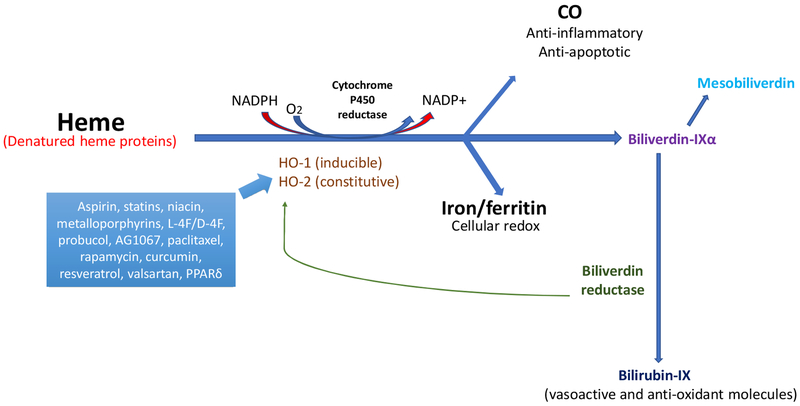Figure 1:
Drug actions in the heme degradation pathway. HO-1 (inducible) and HO-2 (constitutive) cleave free heme or denatured heme proteins to generate CO, ferritin, and biliverdin, which is subsequently converted to bilirubin by biliverdin reductase. CO has both anti-inflammatory and anti-apoptotic properties [3, 4, 14, 15]. Ferritin is essential for cellular redox reactions [24–26]. Serum bilirubin levels are positively linked with a decreased risk of CVD and protection against diabetes and vascular dysfunction [36, 37]. Drugs focused on the heme degradation pathway predominantly induce HO-1 activity, possibly by interacting with the gene promoter. Biliverdin reductase functions via a direct increase of HO-1 or an increase in bilirubin levels to promote a reduction in oxidative species [54, 55], and mesobiliverdin enhances β-cell function in the pancreas through its antioxidant properties [36]. This pathway provides the basis for multiple pharmaceutical and genetic agents that can protect against CVD by increasing HO-1 expression.

